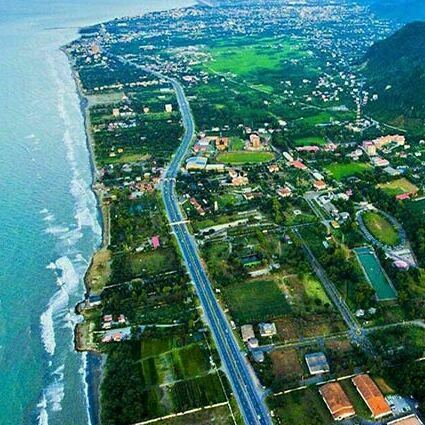-
About us
-
Deputies
- Vice-Chancellor for Education and Postgraduate Education
- Vice-Chancellor for Research and Technology
- Vice-President for Administrative and Financial Affairs
- Vice-Chancellor for Students and Cultural Affairs
-
Faculties



Ramsar, a captivating city nestled within Iran’s northern Mazandaran Province, was formerly known as Sakhtsar. It holds the distinction of being the westernmost city in Mazandaran. Bordered by the Caspian Sea to the north, the Alborz mountains to the south, Shiroud city to the east, and Gilan province’s Chaboksar city and Oshian village to the west, Ramsar boasts a diverse and stunning landscape.
The city experiences a warm and humid summer season, giving way to milder winters. This unique climatic combination, coupled with the close proximity of both the lush Caspian Sea and the majestic Alborz mountains, bestows upon Ramsar an exceptional beauty that attracts tourists throughout the year.
For added convenience, Ramsar is equipped with its own airport, facilitating travel and exploration for visitors.
The captivating highlands surrounding Ramsar, particularly Javaherdeh (formerly Jowardeh, meaning “upper village”), offer breathtaking scenery and a refreshingly pleasant climate. According to the 2016 census, Ramsar has a population of approximately 35,997. Previously part of Tonkabon county, Ramsar gained its administrative independence in 1985 with the implementation of new territorial divisions. The local dialect spoken within the city is known as Ramsari.
Nestled amidst the verdant slopes of the Alborz Mountains and the shimmering Caspian Sea in Mazandaran Province, Ramsar, aptly nicknamed the “Bride of Iranian Cities,” has emerged as a leading tourist destination. Its allure stems from a unique combination of breathtaking natural beauty, captivating historical sites, and modern amenities.
Modern amenities complement Ramsar’s natural beauty and historical significance. The presence of an airport and a variety of hotels, both historic and contemporary, cater to the needs of discerning travelers, ensuring a comfortable and enjoyable stay.
With its diverse attractions, Ramsar continues to captivate thousands of domestic and international tourists each year. It remains a true gem of Mazandaran Province and a must-visit destination for travelers seeking an unforgettable experience that blends breathtaking natural landscapes, historical intrigue, and modern conveniences.
Ramsar, situated in western Mazandaran, boasts a unique combination of natural wonders and historical treasures, solidifying its position as a leading destination for nature tourism in Iran. This captivating region attracts over 10 million domestic and international travelers annually.
Modern Tourism Infrastructure:
Ramsar enjoys a unique proximity to mountains, sea, and forests. The plains region experiences a moderate and humid climate, while the mountainous areas offer a cool and semi-humid environment.
Beyond tourism, Ramsar’s economy thrives on agriculture and animal husbandry.
Ramsar’s captivating beauty, rich history, and modern tourism infrastructure have established it as a significant tourism hub not only within Iran but also on a global scale.
University Address: Ramsar, 5 kilometers west of Ramsar, Shahid Suleimani Boulevard, next to the Green city Recreational Complex (Ramsar Cable Car), Ferdowsi Street, Rahman Higher Education Institute
Fax: +98 11 44464846
Email: info@rahman.ac.ir
Telephone: +98 11 44464846
Short Message System (SMS): 30007654321431